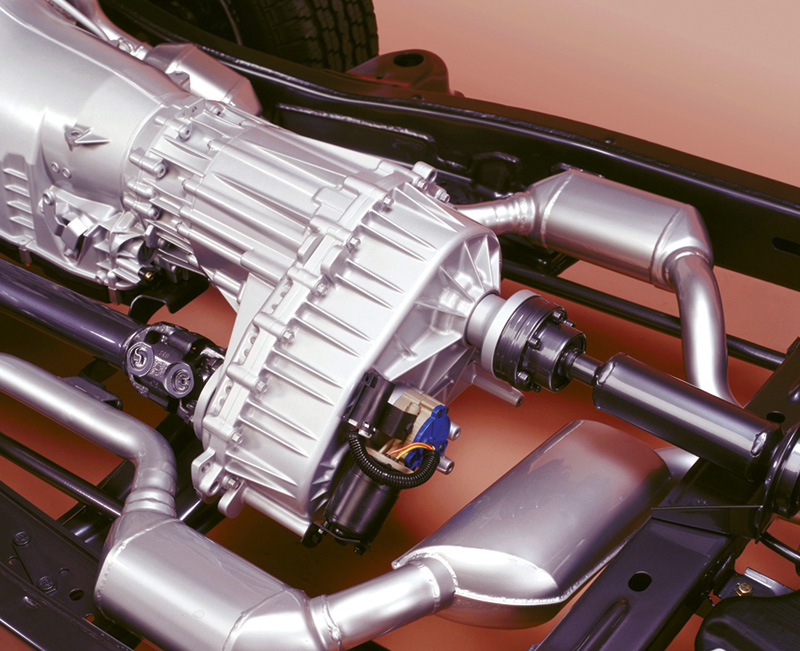This early M-Class enlists the capabilities of the ABS to achieve excellent traction.
In the movie The Lost World: Jurassic Park, a hungry tyrannosaurus rex tears a Mercedes-Benz M-Class SUV apart to get at its tasty human contents. Pardon us, Mr. Spielberg, but we don’t think so. A convertible, sure. Maybe even a flimsy little hardtop, but decidedly not this rugged and extremely well-built 4,321 lb. conveyance with its reinforced steel body cage.
So, it’s a solid vehicle, but how does it get the power of its efficient, high-tech V6 or V8 to the ground in a manner that allows it to navigate off-road sites, perhaps in an effort to evade gigantic reptilian predators? We’ve noticed in conversations that most people out there don’t have a clue about the clever engineering M-B used to achieve that capability, so here’s the story.
In most cases, the terms “four-wheel drive” and “4X4” have been misnomers. There’s a differential at both ends and one in the middle, right? So in slippery conditions you’ve still only got a 4X2. This brings up the old saying, “Four-wheel drive won’t keep you from getting stuck, it’ll just get you 50 feet deeper into trouble.”
Mercedes-Benz didn’t believe its customers would take kindly to ending up in that unfortunate situation, so its engineers designed a drive system for the M-Class that goes as far as any we’ve seen to avoid it, and does so elegantly without the mechanical clutter of differential locks or viscous couplings.
Picture a full-time, dual-range set-up with three open differentials and a 50-50 torque split front to rear. Nothing unusual or troublesome about that. Also no traction and no forward progress if both a front and a rear wheel are in icy troughs.Â
So, how is four-wheel drive achieved? Aha, there’s a trick to it, and the trick is only possible because ABS provides the basis of the 4-ETS (Electronic Traction control System). If you’re familiar with farm tractors, you know they typically have separate rear wheel brakes. If one of those big lug tires starts spinning, you just apply the pedal for that side and torque flows to the other, which will usually keep you rolling. Same thing here, only we’re talking both ends, and no intervention from the driver, who’s probably a mechanically-oblivious soccer mom or an intellectually-preoccupied exec, is required. Instantaneous, too.

There’s nothing unusual about the transfer case. It’s the intervention of electronics and ABS that makes the difference.
Here’s the action:Â Whenever a wheel speed sensor tells the control unit that a tire is spinning, it orders the ABS hydraulic unit to use its servo pump and accumulators to brake that
corner until the differential starts sending power to the opposite side. This works even if three tires are on slick surfaces. If conditions are even worse than that, just be careful.
A few service notes:
- Want to do a dyno test? Then you’d better have a four-wheel unit or you’re going through the wall.
- You can tow an M-Class, but all four wheels must be on the road and you can’t go more than 30 miles at a speed of 30 mph or less. If you have to go farther and faster than that, either disconnect the battery and both driveshafts, or use a flatbed.
- The shift linkage must be adjusted with the vehicle’s weight on all four wheels and the selector in “D.”






0 Comments